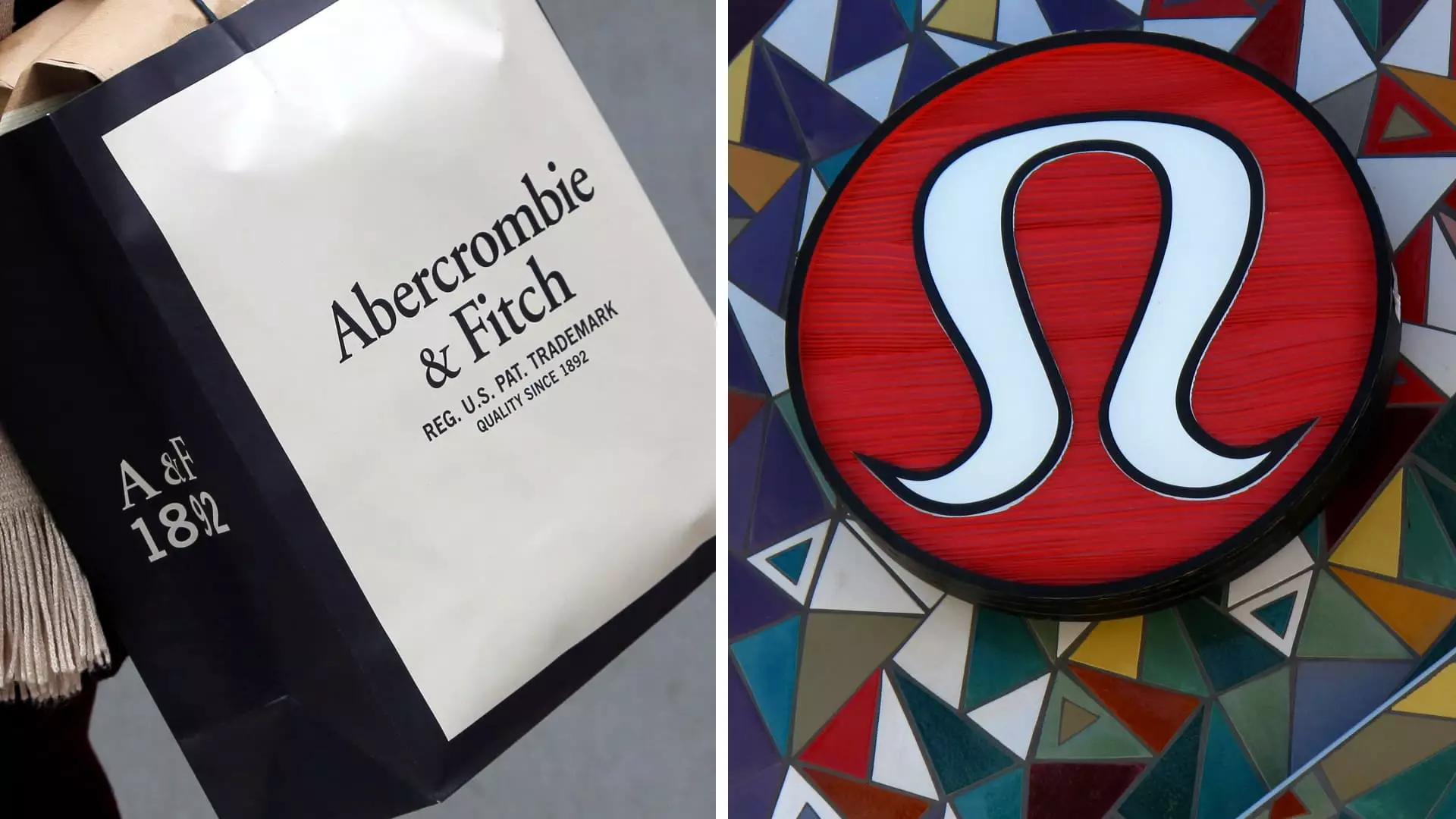The latest reports from major retail players in Orlando, Florida, have sparked contrasting reactions among investors. Although many large retailers reported early holiday sales that exceeded expectations, the overall response from Wall Street has been tepid, if not outright negative. This article dives into the recent developments in the retail industry and seeks to unravel the implications for companies and investors as the crucial holiday period unfolds.
Some notable names in the retail space, such as Lululemon, Abercrombie & Fitch, and American Eagle, reported robust sales during the holiday season, prompting them to revise their fourth-quarter projections positively. Lululemon, for instance, anticipates sales growth between 11% and 12%, with expectations of achieving between $3.56 billion and $3.58 billion in revenue. This marks an upward revision from the previous sales guidance, which forecasted a more conservative range of $3.48 billion to $3.51 billion. Investors might expect such company-specific adjustments to be taken as good news; however, the reality reveals a different sentiment.
Macy’s, on the other hand, reported a less-than-favorable outlook for its key quarter. This development contributes to the overall mixed sentiment regarding the retail sector, particularly when juxtaposed against the stronger performances observed by its peers. While Lululemon and Abercrombie displayed optimism in their outlooks, Macy’s figures fell short of expectations, leading to significant drops in share values across the board. Consequently, despite initial positive reports, the sentiment among investors has taken a downturn.
Investor Reactions: Caution Amid Growth Hurdles
The stock market’s negative reaction to generally positive sales reports raises questions about investor sentiment. Abercrombie’s share price, for example, saw a staggering drop of about 20%. This reaction reflects an underlying concern among investors who are potentially reassessing growth trajectories in light of garden-variety performance benchmarks. After posting phenomenal sales in previous years, there are fears that Abercrombie’s roaring growth may be entering a more deliberate phase as it confronts a tougher comparative landscape.
The pattern continues across other retailers, with names such as Urban Outfitters also witnessing declines in their stock prices, despite reporting net sales growth. Urban Outfitters’ total net sales for the two months ending December 31 rose by 10% year-over-year, driven by healthier online sales figures. Yet, the brand still experienced significant drops in stock prices, underscoring a disconnect between sales growth and investor confidence.
This skepticism among investors hints at broader trends in retail growth, particularly as companies start to emerge from the unparalleled consumer spending patterns experienced post-COVID-19. Many analysts suggest that the unparalleled rises in previous years may render curated expectations unrealistic and that the current retail environment is likely to experience normalization.
Retail experts indicate that the shifting consumer behavior is shaping the current market landscape. The National Retail Federation has projected slow growth for the holiday season, expecting a rise between 2.5% and 3.5%. When factoring in inflation, the expectation for genuine growth becomes even less optimistic, suggesting that consumers are becoming increasingly price-sensitive and cautious about their spending habits.
Furthermore, the anticipated slowdown in growth is drawing attention to why retailers must enhance their strategies rather than relying solely on growth figures. While Abercrombie and Lululemon proactively adjust their profit outlooks and growth strategies, there is an underlying awareness that long-term sustainability necessitates more than just positive sales reports; enhancing operational efficiency and improving profit margins are essential.
The dynamics at play in the retail industry during this holiday season convey a prevailing sense of caution. Traders and investors are beginning to recognize that exceptional growth cannot be a foregone conclusion as retailers transition out of the pandemic’s unique consumer behaviors. Although many retailers managed to report better-than-expected early holiday results, investor reactions emphasize the importance of separating true growth potential from temporary sales spikes.
The ongoing dialogue at events like the ICR conference illustrates just how pivotal these conversations will be in shaping the future of retail in 2025 and beyond. With a keen focus on driving shareholder value, businesses must adopt a forward-looking approach that prioritizes sustainable growth, profit margins, and a deeper understanding of consumer sentiment. As the retail sector anticipates the coming year, the key for investors will lie in discerning which strategies will genuinely sustain growth in an ever-evolving market landscape.

